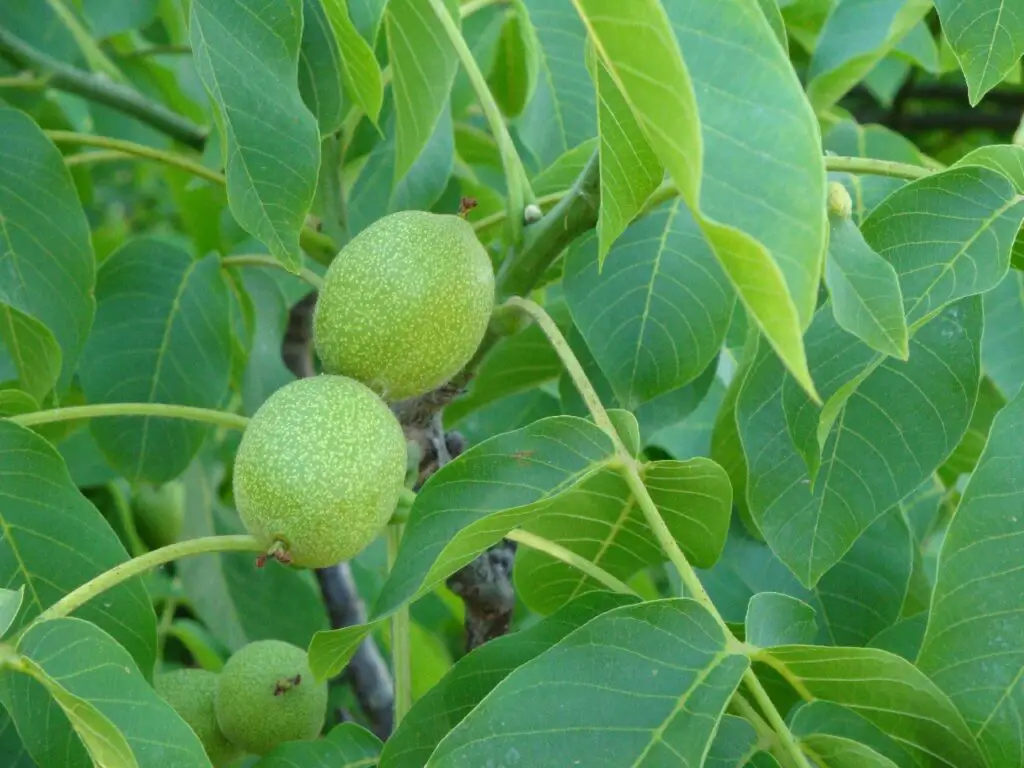Walnut trees are deciduous slow growers that produce meaty nuts that play an important role in our nutrition. Being deciduous (having separate male and female plants), you must plant both walnut trees to obtain fruit.
Most trees will start bearing fruit in 3-4 years after transplant. Walnuts have multiple species or varieties that are good to grow in home gardens, such as English walnut, Black walnut, etc.
To grow walnut in the home garden, you should probably select a dwarf, disease-resistant, and hardy variety since many walnut trees can grow to fifty feet.
Continue reading to discover how to plant a walnut tree in your home garden.
Varieties Of Walnut To Be Grown In Home Garden:
You can have various walnut varieties available in the market and the nursery; however, not all are suitable to be grown in home gardens, and the right selection is the most crucial decision that will decide the success or failure of the plant.
Black walnut
- Black walnuts have harder shells and more flavorful nutmeats than English walnuts.
- Black walnut cultivars like “Kwik Krop,” “Snyder,” and “Sparrow” are bred specifically to produce nuts.
- Unfortunately, because of their scarcity, it could be challenging to buy these cultivars.
- Additionally, in many US regions, especially in Utah, many commercially grown cultivars (like “Thomas”) do not reliably produce ripe nuts year after year.
English walnut
- There are several options in English walnut.
- Due to its greater winter hardiness (it can withstand temperatures between -10 and -20° F), English walnuts of the Carpathian kind are a superior option for most US regions, especially for Utah.
- Only cultivate non-Carpathian varieties in warmer regions, such as the Moab and St. George regions.
How To Grow Walnut Trees in Home Garden?
You need some patience to grow walnut trees because they will take years to reach maturity and a stage where they begin producing nuts.
Additionally, growing walnut trees can deplete other plants’ nutrients, so you should select an appropriate site for this tree in your home garden. To grow a walnut tree from seed, follow the steps below:
Growing Walnut Plants from Seed:
It can take months for walnut seeds to germinate, and the germination rate is very low. Therefore, planting a walnut tree with a seedling is a better option in terms of saving time and money. Moreover, it requires years of experience to learn how to grow a walnut tree from its seed and which kind of plant would have female organs and which one would grow into a male plant, so it may take a good deal of trial and error before you would end up with both a viable male and female plant.
Growing Walnut Plant from Seedling:
Growing a walnut tree from a seedling is advantageous to home gardeners because it will be a grafted plant and begins producing fruits earlier than a plant grown from seed.
- Transplant a container-grown walnut tree in the dormant season (i.e., Jan to Early Feb) as long as the soil is not frozen or waterlogged.
- Bare-rooted trees should be planted in the late fall or early spring.
- You can find both bare-rooted and potted trees available at reasonable prices at local nurseries.
- Walnuts grow best in deep, well-drained soil that retains moisture longer (in full sun or mild shade).
- Walnut trees thrive best in alkaline soil.
- Avoid planting in regions with a chance of late frost, which can easily damage the fragile buds.
- Make sure the visible soil line at the tree’s base is just above soil level when you plant
- Prepare a hole that is compatible with the size of the seedling.
- Mulching is the best practice to retain soil moisture and prevent weed growth from competing with the young tree.
- During the first year or two, you shouldn’t allow the young walnut tree to dry out or get water-logged because both extremes can be detrimental to plant growth.
- Fertilizing with an all-purpose fertilizer (having N, P, AND K) in early spring is recommended.
- Midwinter or midsummer are good times to prune.
Care and Maintenance of Home-Grown Walnut Trees:
- In walnut orchards, squirrels are regular visitors. If left unchecked, they can devour an entire crop of walnuts.
- Cut away branches of the walnut tree that are less than 6 feet (1.8 meters) from the ground (If you can do so without creating knots that reduce the value of the wood)
- Cover the trunks with plastic tree guard to prevent them from climbing them
- Depending on your area and climatic conditions, other pests like flies, aphids, and caterpillars may not affect your tree if they are active toward the end of the growing season.
- Keep livestock away from walnut trees of all sizes since the harm they do might even void the mature trees’ wood value.
- For black walnuts, sufficient fertilization will reduce weed competition.
- Wait to fertilize the walnut plants until the trunk reaches at least “pole” size or 4.5 feet (1.4 meters) above the ground.
- Another option is “late spring.” Fertilize each tree with nitrogen, phosphate, and murate of potash
- If the results are good, fertilize a few additional trees to compare the impact and reapply every three to five years.
- Many gardeners start by planting more plants than they can support, which is not a good practice.
- The walnut tree should be pruned early if it is being raised for lumber to ensure a straight trunk.
- One “leader” branch should be left at the top of the tree to direct the tree’s growth throughout the following one to two growing seasons.
- Black walnut trees should be pruned after further growth since all types, including those planted for nuts, are eventually sold for lumber.
- Nut-producing saplings can be left alone until after thinning.
- Finding a skilled pruner to help you identify leaders and significant branches are advised if you have never pruned trees before, especially saplings.
- If the tree’s top is forked, straighten the best leader by bending it and taping it to other branches for support before trimming the tip.
- Keep weeds and sod out of the vicinity of seedlings to prevent them from competing with their growth for nutrients.
- Remove weeds and sod from the area manually or with a fabric weed barrier. Using 2 to 3 inches of mulch over the root zones will help larger seedlings resist weed growth.
- Never apply thick mulch over newly sprouted shoots, as it may prevent growth. Hold off until the seedling develops roots and becomes woody.
Harvesting Walnuts Grown in Your Home Garden
- A long broom handle is useful for gently knocking the nuts from the tree.
- June and July are the months of harvesting walnut (when they are still “green” and before the shells have formed.
- Otherwise, wait until the walnut husks begin to separate and fall.
- Gather the fallen walnuts and spread them out in a single layer in a warm, breezy area to dry.
- The walnuts will be fully exposed when the green husks crack fully.


